Brighouse is a name that has been associated with Richmond’s main retail and business district since the days before there was any retail or business done there. There is no question that the name Brighouse comes from Sam Brighouse, once the owner of the property on which City Hall and Minoru Park are now located but why did the area, part of Richmond’s City Centre, get and keep that name?
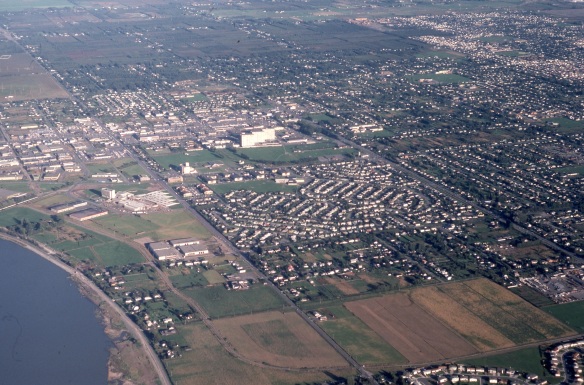 This 1976 aerial view shows most of the Brighouse lands, extending from Granville Avenue toward the river. The Brighouse subdivision can be seen at centre. City of Richmond Archives photograph 2008 36 3 79.
This 1976 aerial view shows most of the Brighouse lands, extending from Granville Avenue toward the river. The Brighouse subdivision can be seen at centre. City of Richmond Archives photograph 2008 36 3 79.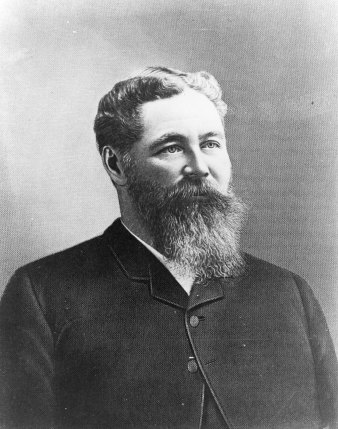
Samuel Brighouse, ca. 1860. City of Richmond Archives photograph RCF 32.
Samuel Brighouse was an prominent early settler, land owner, farmer and businessman in the Lower Mainland. He was born in Yorkshire in 1836 and at the age of 26 years sailed from Milford Haven with his cousin John Morton to New York and then to Panama, to San Francisco and then to New Westminster, a trip of almost two months.The two men made their way to the Cariboo gold fields and, finding prospects poor there, made their way back to New Westminster, making the trip both ways on foot.
Brighouse and Morton partnered with William Hailstone in November of 1862 and purchased 555 acres of land in what is now the West End of Vancouver, some of the most valuable land in the country today. The three men, who became known as “The Three Greenhorns”, built a cabin and spent a couple of years clearing trails and living on the property. In 1864 Brighouse, who had been looking at farmland in the Fraser Valley and speculated that it may become quite valuable, acquired 697 acres of land on Lulu Island, some preempted and some purchased from original preemptors. The property today is bounded on the east by No.3 Road, on the west by No.2 Road, on the south by Granville Avenue and on the north by the river.
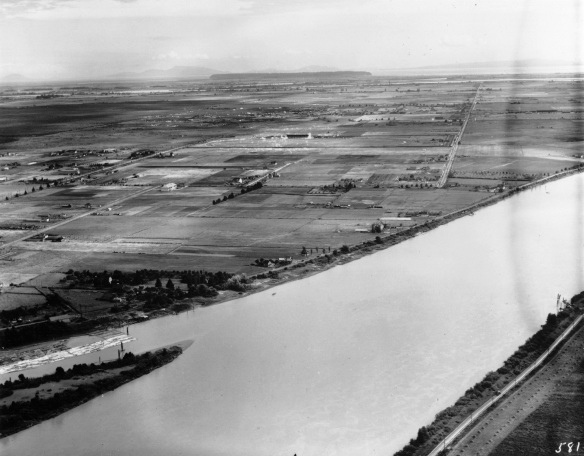 This aerial view looking south, ca. 1925, shows a portion of the Brighouse property on the right, extending east to No.3 Road and south from the Richmond United Church to Brighouse Racetrack on the south. City of Richmond Archives photograph 1985 166 1.
This aerial view looking south, ca. 1925, shows a portion of the Brighouse property on the right, extending east to No.3 Road and south from the Richmond United Church to Brighouse Racetrack on the south. City of Richmond Archives photograph 1985 166 1.Brighouse farmed crops and livestock on the property, building a successful operation and erecting the largest barn on the Fraser River. He purchased another property near New Westminster called Rose Hill, building a dairy farm there. He operated both of his ventures until 1881, when he leased out his farms and returned to his property on Burrard Inlet.
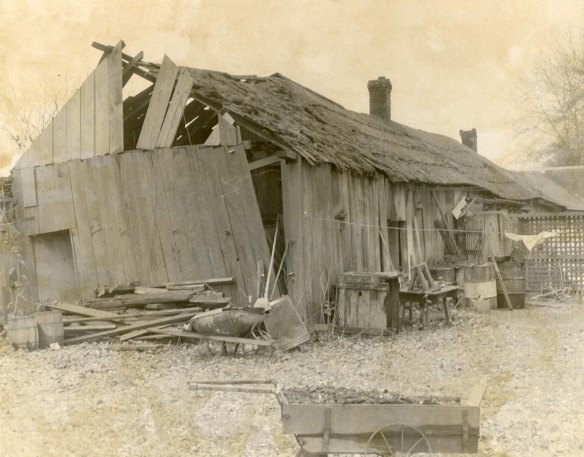
An old barn on the Brighouse lands, ca. 1973. City of Richmond Archives photograph 1977 16 13.
Brighouse was one of the signatories on the petition for the incorporation of the Township of Richmond and he served briefly on Richmond Council in 1883, although he no longer lived there. He served two terms as one of the first Councillors in Vancouver. Sam Brighouse focused his attention on Vancouver and its development after leaving Lulu Island and made a fortune selling his property there after the arrival of the Canadian Pacific Railway. He retained a great deal of his wealth by never selling his Richmond farmland, instead leasing it to other farmers.
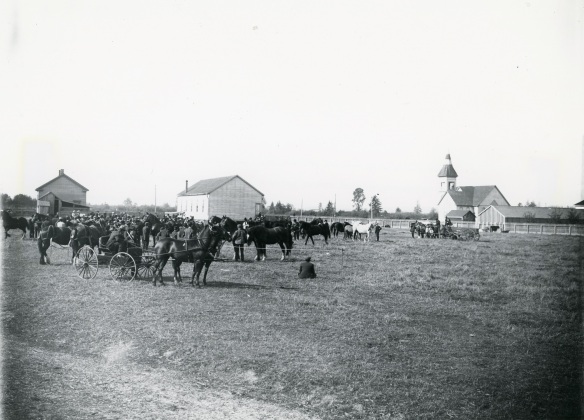 Richmond’s first Municipal lands were purchased from Sam Brighouse for $400 in 1880. Shown are the Town Hall, left, the Agricultural Hall, centre, and the Richmond Methodist Church, now Minoru Chapel, at its original River Road at Cambie location. City of Richmond Archives photograph 1977 9 18.
Richmond’s first Municipal lands were purchased from Sam Brighouse for $400 in 1880. Shown are the Town Hall, left, the Agricultural Hall, centre, and the Richmond Methodist Church, now Minoru Chapel, at its original River Road at Cambie location. City of Richmond Archives photograph 1977 9 18.In 1880 Brighouse sold five acres of his Lulu Island property at the present intersection of River and Cambie Roads to the fledgling Corporation of the Township of Richmond where the first Town Hall was built. Sam Brighouse’s later life was marked by ill health and he returned to his native Yorkshire in 1911 where he passed away in 1913.
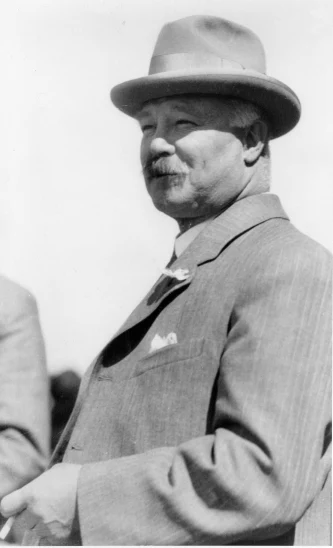
Michael Wilkinson Brighouse, Sam Brighouse’s nephew and Heir. City of Richmond Archives photograph 2001 9 3.
Brighouse was joined by his nephew Michael B. Wilkinson in 1888 who helped his uncle with the running of his farms as well as investing in canneries. He changed his name to Michael Wilkinson Brighouse, a condition of his uncle’s will, and became Sam’s heir. In 1909 Sam Brighouse sold a portion of his land to a group who built Richmond’s first racetrack, Minoru Park, named for the 1909 Epsom Derby winner. The track went out of business in 1914 with the First World War and the property was bought back by Michael Brighouse and reopened as Brighouse Park Racetrack in 1920.
Michael W Brighouse kept the Brighouse name in the public consciousness through his business and political activities. He served two terms as a Richmond Councillor in 1894 and 1895 and one term as Reeve in 1900. In 1919 he traded the five acres of land purchased from his uncle by the Township for four acres of land at the present City Hall site. Wilkinson Brighouse passed away in 1932, leaving the property to his heirs who sold it to the Corporation of the Township of Richmond in 1962. Until its sale, Wilkinson Brighouse and his heirs continued to lease out their farmland to local farming families such as the McClellands, Shaws, Fishes and Zellwegers.
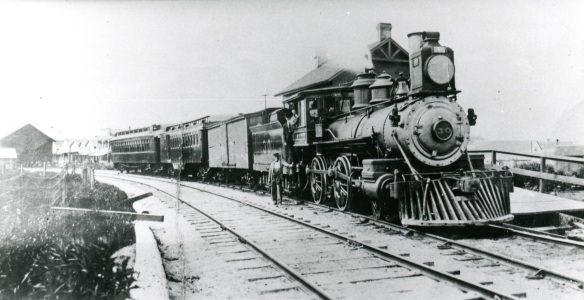
The CPR train , “The Sockeye Limited”, at Steveston, ca. 1902. City of Richmond Archives photograph 1977 2 38.
So the Brighouse name was very well known in Richmond throughout its early years, but how did that part of town retain the name over the names of some of the other pioneer property owners in the area? One explanation is because of the Canadian Pacific Railroad and the construction of the Vancouver and Lulu Island Line, the “Sockeye Limited” in 1902. Eyeing freight and passenger revenues from the canneries of Steveston and the farms which dotted Lulu Island, the CPR built the railway from the depot in Vancouver to Eburne (Marpole), spanned the North Arm of the Fraser with a bridge and built an eight mile track to Steveston where they built a large train station. Along the line where it crossed a road, still a rarity in Richmond at the time, three smaller stations were erected. At No.2 Road “Lulu Station” was built. At No. 20 Road “Cambie” Station, named for Civil Engineer and CPR Executive Henry J. Cambie, was built. Where the track crossed No.3 Road near the southeast corner of the Brighouse property, owned by the man who had sold large amounts of his Vancouver property to the CPR and its officers, “Brighouse” Station was put up.
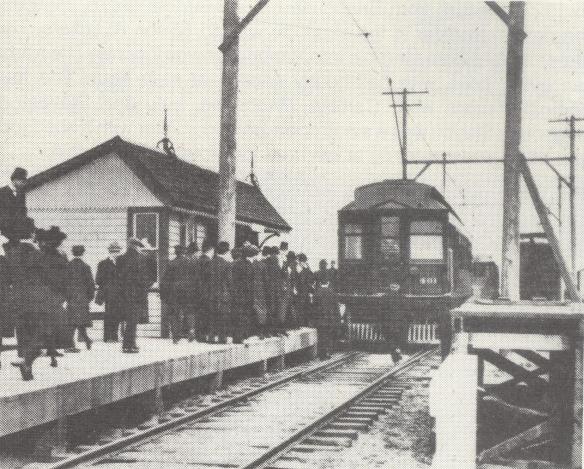 Brighouse Station, ca. 1909. Photograph from “Richmond, B.C., Brighouse District Self-Guided Historical Tour” (1992), City of Richmond Archives GP 614
Brighouse Station, ca. 1909. Photograph from “Richmond, B.C., Brighouse District Self-Guided Historical Tour” (1992), City of Richmond Archives GP 614It is often the case where railroad stations are placed, the surrounding area takes on the name of the stop and the Brighouse name was even further imprinted on the area in 1922 when the Brighouse Post Office was opened at the train station. By this time the second Richmond Town Hall had opened across No.3 Road from the station and its address became “The Corporation of the Township of Richmond, Brighouse, B.C.”.
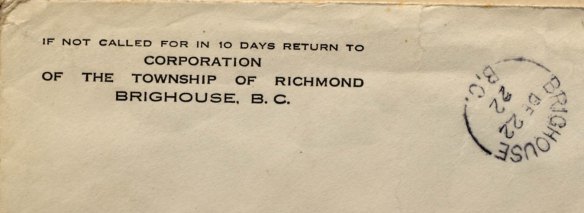
Detail of an envelope showing the return address for the Richmond Town Hall, 1922. From the personal collection of H.S. Steves.
Businesses took on the name of the area and names like Brighouse Grocery, Brighouse Cafe and Brighouse Hardware let customers know their location and that they were near the tram station. As years passed Brighouse Subdivision was built on the old farm, served by Samuel Brighouse Elementary School. Brighouse Industrial Estates provided homes for large companies. Today the Richmond Olympic Oval occupies space near the river and condo towers rise where once Sam Brighouse built dykes to protect his farm.
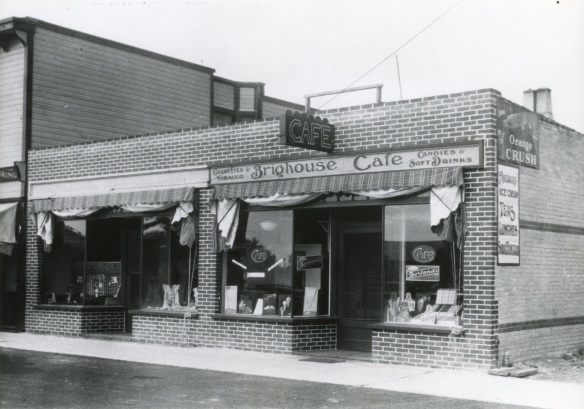
The Brighouse Cafe, shown here before 1940, was one of a multitude of businesses, services, organizations and retailers that used and continue to use “Brighouse” in their names. City of Richmond Archives photograph 2001 10 3.
The name Brighouse has become synonymous with the commercial and administrative centre of Richmond and although the original train and tram station is long gone, a new Brighouse Station opened down No.3 Road from the original one in 2009 as the terminus of the Canada Line further connecting the name of Sam Brighouse to the history of Richmond.
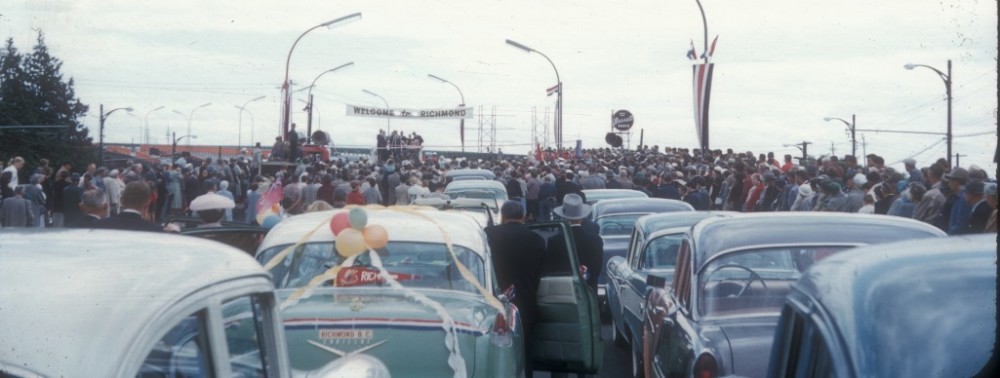












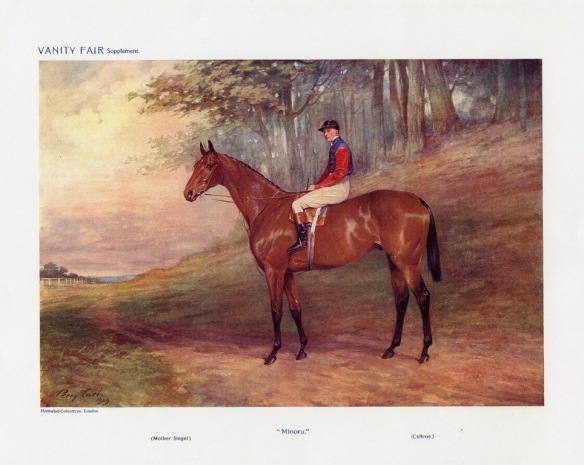

You must be logged in to post a comment.